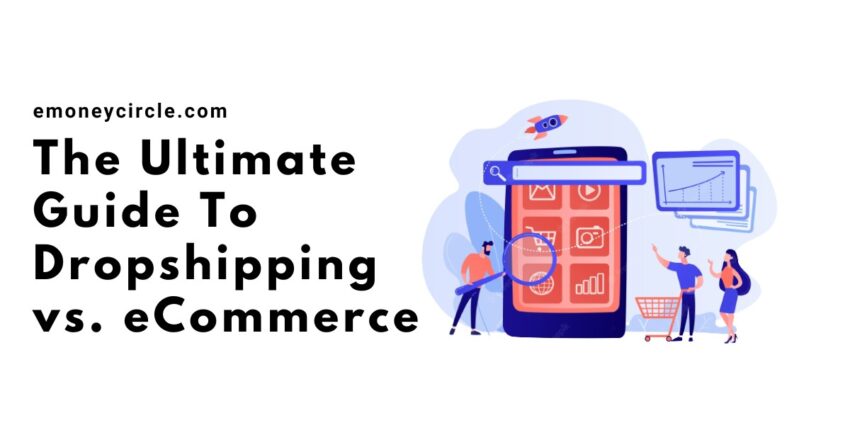When we talk about dropshipping vs eCommerce, there are many ways for stores to sell things online without having a physical storefront. Dropshipping is a unique way to do business that has grown out of this gold mine of opportunities. The important factor of this model is that retailers can sell products without keeping them in stock.
Dropshipping is a way to sell online that is different from how most eCommerce businesses do it. This can be confusing, especially for Small Business owners just starting an Online Business.
1. How does fulfillment for eCommerce work?
Ecommerce fulfillment takes orders from your website and sends the right products to your customers within the agreed-upon time frame.
Usually, there are four steps to the eCommerce fulfillment process:
- Someone buys something from your Online Store.
- The order is sent to the place where you’ll fulfill it.
- At the fulfillment center, the order is packed and sent out.
- The package is sent to your customer by the courier you chose.
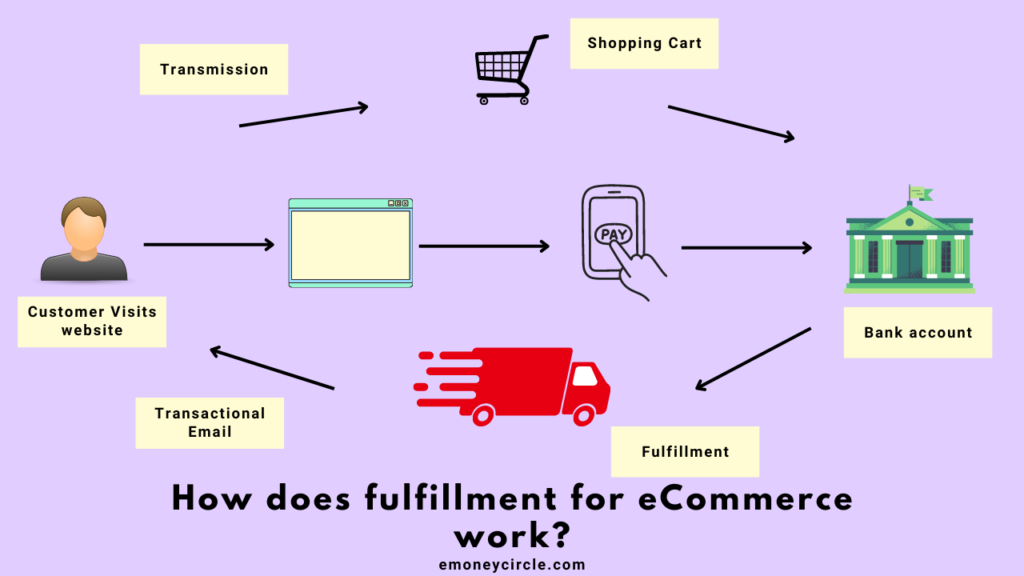
A fulfillment center is where your stock is kept, and orders are processed and shipped. And also, it could be your spare bedroom or garage if you have a small business. If you have a more significant eCommerce business, this could be a warehouse or storage space.
Most small businesses handle order fulfillment independently, but as your business grows and more orders come in, you may decide to hire a fulfillment company to take care of that part of things for you.
As part of eCommerce fulfillment, you’ll need to keep a close eye on stock levels and order or make more when needed.
2. Different types of fulfillment models for e-commerce
Your e-commerce fulfillment strategy may depend on many things, like the type of products you sell, whether or not you have a warehouse, how many orders you deliver each month, etc. But if you want to make your plan for fulfillment, you need to know about all your options.
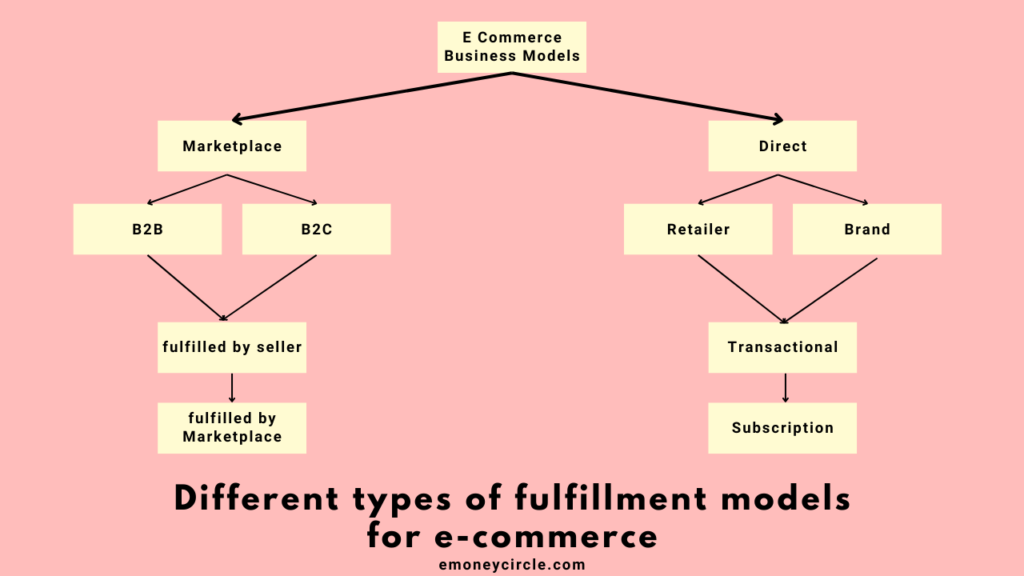
Dropshipping is one of four ways you can organize your order fulfillment operations:
1. This is when a Business takes care of every step of the order fulfillment process. In this case, the company does everything in its facilities. It takes in, stores, manages inventory, packs and ships products, and handles packing.
2. In this model, the supply chain management is done by third parties, 3PL companies. This is a natural step for any e-commerce business when its fulfillment operations get too complicated for the industry to handle on its own.
3. With this fulfillment model, merchants don’t make or store the products themselves. Their main job in dropshipping is to promote these products, take orders, and either send them to the manufacturer or distributor automatically or by hand. So, drop shippers don’t do much to fulfill orders themselves. Instead, they act as middlemen.
4. Hybrid. This model comprises a mix of the order fulfillment methods listed above. For example, a big company can use both in-house and 3PL fulfillment.
3. How Does Dropshipping Work?
Dropshipping is similar to traditional eCommerce fulfillment, but the main difference is that you don’t keep the items you sell in stock. Instead of having a warehouse or spare room full of boxes of inventory to sell online, a dropshipping site sells products that they get from another supplier.
You build an online store like a Traditional eCommerce model with a dropshipping business. However, when orders come in, they are sent to your chosen supplier, who handles the fulfillment process for you.
Before you start, please read our article on how to choose a dropshipping supplier.
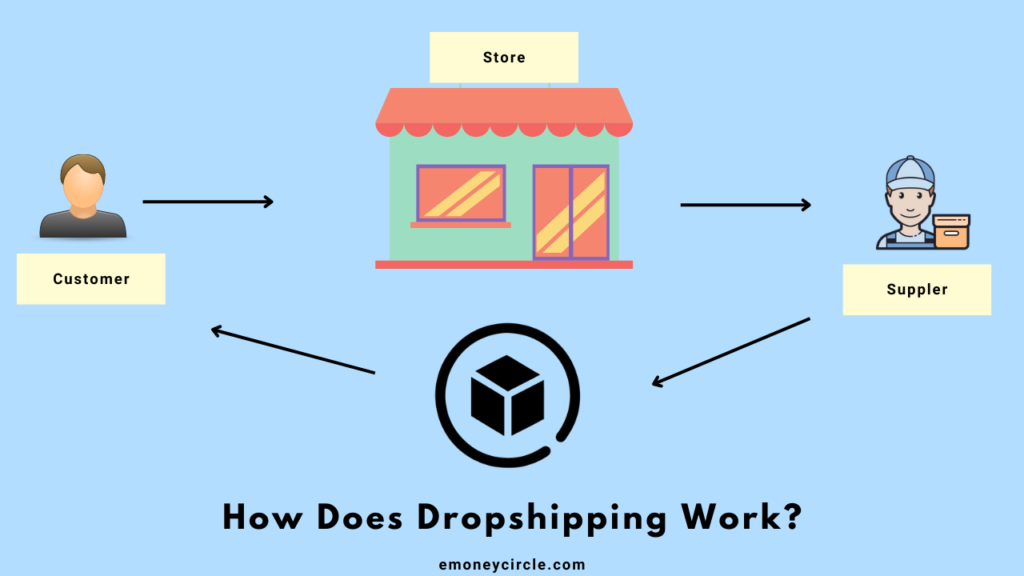
Dropshipping means that the owner of an Online Store never actually touches the goods themselves. However, you are still responsible for things like customer service and marketing.
4. Pros And Cons Of The Dropshipping
Many of the benefits of dropshipping involve how easy it is to start a business like this and how quickly you can make money from it. At the same time, dropshipping limits ambitious business owners who don’t like to settle for less.
Dropshipping’s Pros
Let’s take a closer look at why dropshipping is a good idea.
- There is no need to buy or store stock. Dropshippers don’t deal with the product itself. As we said, they don’t have to worry about their inventory, warehouse, or other buildings. They should be thinking about how to find a reliable supplier and get more customers to stick with them.
- Low investments at the start. The last benefit, which is that there is no stock or warehouse, comes another benefit: low initial investments. This is why dropshipping is so popular with merchants who only have a small amount of money. They can avoid going into debt and start making money right away.
- Faster, and with more goods. With drop shipping, you can grow your business much more quickly because it’s easy to add drop shippers’ products to your stock. It will be enough to put your new offers on your website or some other touchpoint and see if one or more of them is relevant to the people you want to reach.
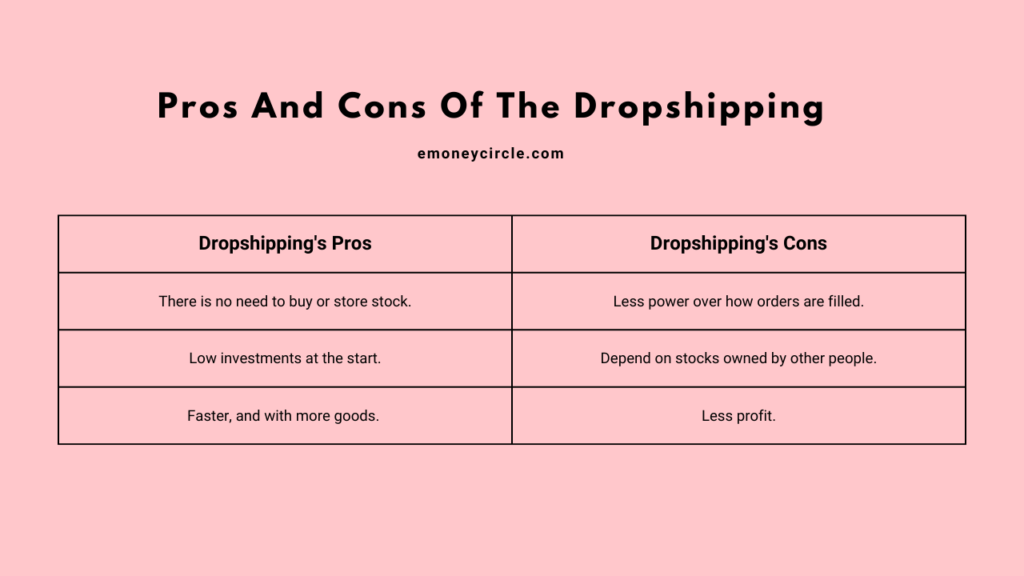
Dropshipping’s Cons
Take a look at the cons of dropshipping below to decide if it’s where you want to end up or if it’s better to go with traditional e-commerce fulfillment.
- Less power over how orders are filled. When you aren’t in charge of some of the essential parts of order fulfillment, like packaging and delivery, it’s clear that you can’t be held responsible for problems like late delivery or the delivery of broken goods.
- In fact, yes, but not in practice. Your business will lose money if a customer isn’t happy with how items are delivered or how well they work. This is because poor customer service is terrible for business.
- Depend on stocks owned by other people. If you don’t control the whole supply chain, you also can’t control what your dropshipping partners have in inventory. There is a higher chance that dropshipping partners will not understand each other. Because of this, customers may pay for an item that is no longer available.
- Less profit. Dropshipping can make you money quickly, but that doesn’t always mean it will be a lot. Buying from wholesalers in smaller amounts can be profitable, but not as much as when you buy in bulk.
5. Dropshipping vs eCommerce
Ecommerce fulfillment and dropshipping can be profitable ways to run an online business. The most important thing is finding the best method for your current situation and plans.
Even though the two have many things in common, they are also different in many ways.
- With e-commerce fulfillment, you have to keep the stock yourself, but with dropshipping, you never have to touch the items.
- Dropshipping usually requires less money up front than eCommerce fulfillment.
- Dropshipping can make it harder to grow and build a brand over time.
- When you use a dropshipping service, it can be harder to ensure that the items and shipping services are of good quality.
You have more control over every part of your business when you use eCommerce fulfillment.
If, after reading this article, you think you’re ready to start a dropshipping business, check out our guides below to help you get started:
- Squarespace Dropshipping
- Wix Dropshipping
- Shopify Dropshipping
Conclusion
The Internet has made it easier than ever to start a business. You don’t have to do much to sell a product or service online. All you need is an idea, a supplier, and a website. Starting an online business doesn’t have many costs, but the potential profits are enormous.
In fact, during the 2020 lockdown, more than 85,000 new online businesses were created in the UK. Dropshipping companies make up a lot of these businesses.
Now you may have an idea about Dropshipping vs eCommerce. Ecommerce is the business of selling goods or services online. Most of us know what this means and buy lots of things online using an eCommerce website or app, but fewer people know that there are different kinds of eCommerce, one of which is dropshipping.
